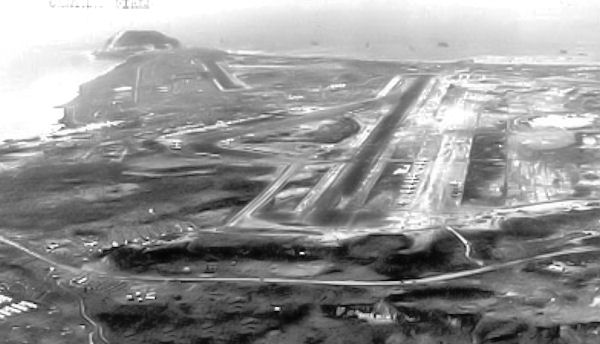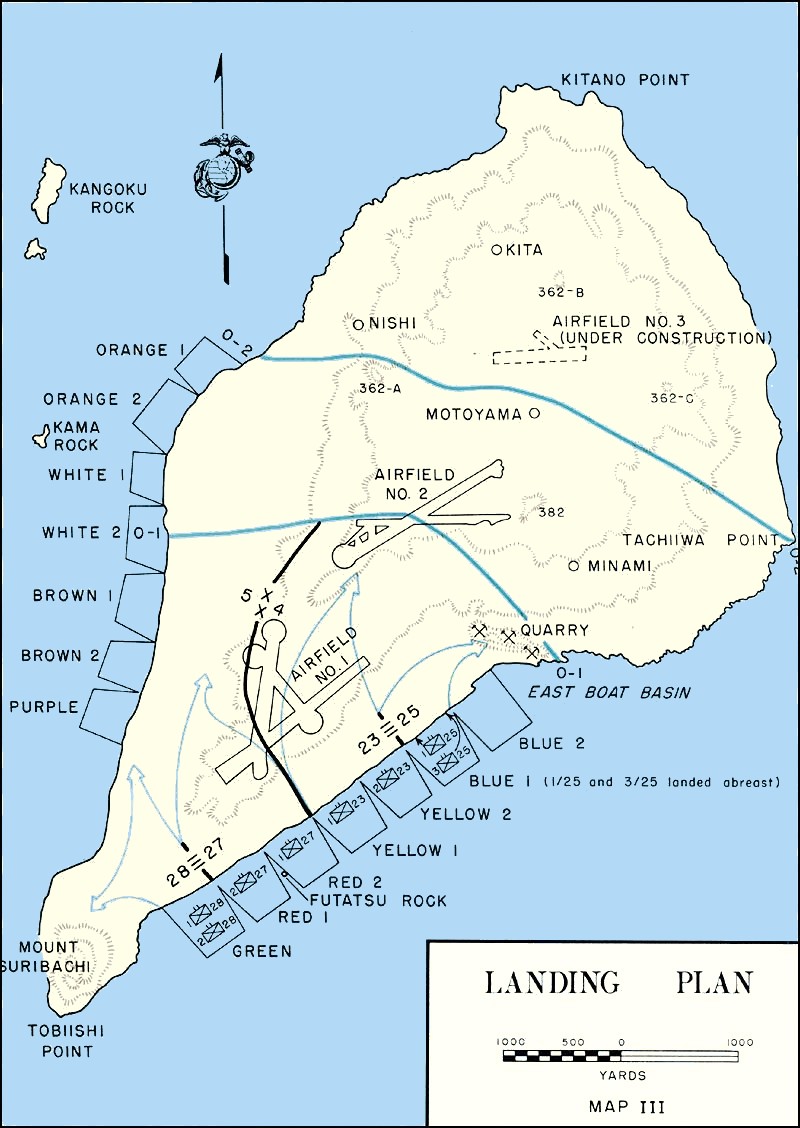North Field (Iwo Jima) on:
[Wikipedia]
[Google]
[Amazon]
Central Field or Iwo Jima Air Base is a former World War II airfield on

 The Japanese had constructed the airfield near the center of island laid out as an "X" of two intersecting
The Japanese had constructed the airfield near the center of island laid out as an "X" of two intersecting
Iwo Jima
Iwo Jima (, also ), known in Japan as , is one of the Japanese Volcano Islands and lies south of the Bonin Islands. Together with other islands, they form the Ogasawara Archipelago. The highest point of Iwo Jima is Mount Suribachi at high. ...
in the Bonin Islands
The Bonin Islands, also known as the , are an archipelago of over 30 subtropical and tropical islands, some directly south of Tokyo, Japan and northwest of Guam. The name "Bonin Islands" comes from the Japanese word ''bunin'' (an archaic readi ...
, located in the Central Pacific. The Bonin Islands are part of Japan. Today, the base is the only airfield on the island, operated by the Japan Self-Defense Forces
The Japan Self-Defense Forces ( ja, 自衛隊, Jieitai; abbreviated JSDF), also informally known as the Japanese Armed Forces, are the unified ''de facto''Since Article 9 of the Japanese Constitution outlaws the formation of armed forces, the ...
.
History

 The Japanese had constructed the airfield near the center of island laid out as an "X" of two intersecting
The Japanese had constructed the airfield near the center of island laid out as an "X" of two intersecting runway
According to the International Civil Aviation Organization (ICAO), a runway is a "defined rectangular area on a land aerodrome prepared for the landing and takeoff of aircraft". Runways may be a man-made surface (often asphalt, concrete, ...
s one and the other .
Located south and west of the midpoint between Tokyo and Saipan
Saipan ( ch, Sa’ipan, cal, Seipél, formerly in es, Saipán, and in ja, 彩帆島, Saipan-tō) is the largest island of the Northern Mariana Islands, a commonwealth of the United States in the western Pacific Ocean. According to 2020 es ...
, the island of Iwo Jima was needed by the United States Army Air Forces as an emergency landing site for its B-29 Superfortress
The Boeing B-29 Superfortress is an American four-engined propeller-driven heavy bomber, designed by Boeing and flown primarily by the United States during World War II and the Korean War. Named in allusion to its predecessor, the B-17 Fl ...
strategic bombing campaign against the Empire of Japan. The purpose of the assault was to take the island for the three Japanese airfields so that the U.S. Navy Seabees could turn them in to United States facilities. Prior to the assault NCB 133 was assigned to get the southern Motoyama #1 airfield operational and NCB 31 was assigned the central Motoyama #2. On D-plus 5 that was changed because of the casualties the 133rd had taken and the 31st CB was assigned to Motoyama #1. On D-plus 6 the assignments were changed again. The 62nd CB attached to the reserve in V Amphibious Corps was given Motoyama #1, the 31st CB was given Motoyama #2 and the 133rd was given the barely started Motoyama #3. However, the Seabees and elements of the 2nd Separate Engineer Battalion worked together until the Marine ground forces had taken possession of their respective airfield construction assignments.
Reconstruction and expansion work was held up by the protracted land battle, on 16 March the airfield, named Central Field, became operational, with the east-northeast to west-southwest runway graded to and the east–west runway to . A second runway parallel to the east-northeast to west-southwest runway was also built; both were built to accommodate B-29s. By 7 July 1945, the first B-29 runway had been paved to and placed in operation. During the day, 102 B-29s, returning from a raid on Japan, landed on the field. Several sub-grade failures occurred in the construction because of ground water and soft spots in the sub-grade. In some places the paving sealed off steam which had been generated below the surface and when the steam condensed, the sub-grade became saturated. By 12 July, the B-29 runway had been completed and paved for a length of by . The parallel runway was eventually lengthened to , both with a width of . The east–west runway was developed into a fueling strip, by , with 60 fueling outlets. For normal operations, this field could accommodate 120 P-51 Mustangs
The North American Aviation P-51 Mustang is an American long-range, single-seat fighter and fighter-bomber used during World War II and the Korean War, among other conflicts. The Mustang was designed in April 1940 by a team headed by James ...
, 30 B-24 Liberators
The Consolidated B-24 Liberator is an American heavy bomber, designed by Consolidated Aircraft of San Diego, California. It was known within the company as the Model 32, and some initial production aircraft were laid down as export models de ...
and 20 B-29s.
Central Field was headquarters for VII Fighter Command
The VII Fighter Command was a command and control organization of the United States Army Air Forces. Its last assignment was with Far East Air Forces. The Headquarters were based at several locations with forward command moving with the campaign ...
of the Twentieth Air Force
The Twentieth Air Force (Air Forces Strategic) (20th AF) is a numbered air force of the United States Air Force Global Strike Command (AFGSC). It is headquartered at Francis E. Warren Air Force Base, Wyoming.
20 AF's primary mission is Interc ...
from March 1 – December 1, 1945, along with the intelligence-gathering 41st Photographic Reconnaissance Squadron from August though mid-September 1945. Operational fighter squadrons which performed B-29 escort missions from Central Field were:
* 506th Fighter Group
5 (five) is a number, numeral and digit. It is the natural number, and cardinal number, following 4 and preceding 6, and is a prime number. It has attained significance throughout history in part because typical humans have five digits on eac ...
, April 24 – December 3, 1945
* 414th Fighter Group
The 414th Fighter Group is an Air Reserve Component (ARC) of the United States Air Force. It is assigned to the 944th Fighter Wing of Tenth Air Force, Air Force Reserve Command, stationed at Seymour Johnson Air Force Base, North Carolina.
The ...
, July 7 – December 23, 1945
* 21st Fighter Group
021 is:
* in Brazil, the telephone area code for the city of Rio de Janeiro and surrounding cities (Greater Rio de Janeiro)
* in China, the telephone area code for the city of Shanghai.
* in Indonesia, the area code for the city of Jakarta and ...
, March 26 - July 16, 1945
* 548th Night Fighter Squadron, March 5 – June 12, 1945
* 549th Night Fighter Squadron, (Ground Echelon), March 14, 1945 – February 5, 1946
After the war, the 20th Air Force fighter squadrons moved out to Japan, Okinawa or the Philippines and Central Field came under the Jurisdiction of Military Air Transport Service
The Military Air Transport Service (MATS) is an inactive Department of Defense Unified Command. Activated on 1 June 1948, MATS was a consolidation of the United States Navy's Naval Air Transport Service (NATS) and the United States Air Force' ...
(MATS), becoming a refueling stop for MATS aircraft in the Western Pacific. It hosted various communications, weather as well as Far East Materiel Command units for supply and maintenance activities. It was under the command of the Iwo Jima Base Command, as a satellite of the 6000th Support Wing, Tachikawa Air Base
is an airfield in the city of Tachikawa, the western part of Tokyo, Japan. Currently under the administration of the Ministry of Defense, it has also served as the civil aviation with Japan's first scheduled air service.
History
Origins
Tac ...
, Japan.
The third incomplete Japanese airfield (Motoyama No. 3) was built as the "North Field". It required much new construction in rough terrain which consisted principally of consolidated volcanic ash. The initial portion of the work in preparing the sub-grade for the runway entailed the moving of about 200,000-cubic-yards (152,911-cubic-meters) of rock and volcanic ash. Seabee construction was stopped on 27 April and the project was turned over to a USAAF aviation engineer battalion for completion. By V-J Day a runway long, had been graded and was paved to ; 10,000-feet (3,048-meters) of taxiways had been graded; and 129 fighter hardstands provided. This field could normally accommodate 50 P-51s and 14 B-24s (and eight B-29s in an emergency). North Field was abandoned after the war; its facilities were used for revetments and munitions storage in support of the other two airfields.
Central Field stayed in American hands until being turned over to the Japanese Government on 27 June 1968. It then became a navigation and weather station of the Japan Maritime Self-Defense Force (Nihon Kaijo Jieitai), and is still used by the U.S. military as an aircraft refueling depot and as a U.S. Navy special pilot training facility.
At any given time about 350 JSDF personnel are posted to Iwo Jima and though the airfield is strictly for military use, commercial flights carrying veterans are frequent visitors.
Of the three WWII airfields, Central Field is the only one that remains in use today.
See also
* USAAF in the Central Pacific *South Field (Iwo Jima)
South Field was a World War II airfield on Iwo Jima in the Volcano Islands, located in the Central Pacific. The Volcano Islands are part of Japan. The airfield was located on the southern corner of Iwo Jima located on the Motoyama plateau, to ...
* Naval Base Iwo Jima
References
External links
{{DEFAULTSORT:Iwo Jima Air Base Airports in Japan Japan Maritime Self-Defense Force bases Transport in the Greater Tokyo Area Central Field